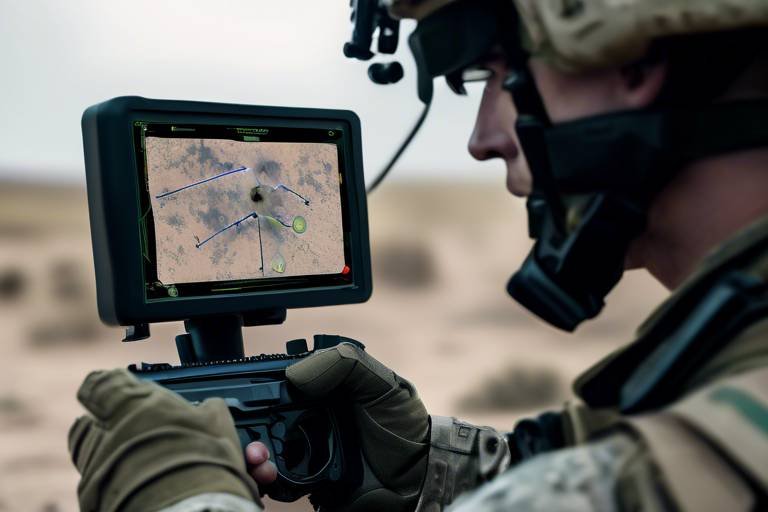AI in Military Biometric Authentication Systems
In today's rapidly evolving technological landscape, the integration of artificial intelligence (AI) in military biometric authentication systems is not just a trend; it's a revolution. Imagine a world where soldiers can be identified within seconds, enhancing both security and operational efficiency. This article delves into how AI enhances biometric systems, the significance of these technologies, their applications, the challenges they face, and the promising future that lies ahead.
At the heart of military operations is the need for robust security measures. Traditional methods of authentication, such as passwords or ID cards, are increasingly vulnerable to breaches. Biometric authentication, which relies on unique biological traits like fingerprints, facial recognition, and iris scans, offers a more secure alternative. By using AI to analyze these traits, military forces can drastically reduce the risks associated with unauthorized access, ensuring that only verified personnel are granted access to sensitive areas and information.
AI technologies, particularly machine learning and deep learning, play a pivotal role in enhancing the performance of biometric systems. These technologies allow systems to learn from vast amounts of data, improving their accuracy and speed over time. For instance, AI can adapt to various environmental conditions, ensuring that biometric systems remain effective even in challenging situations. This adaptability is crucial in military settings where conditions can change rapidly and unpredictably.
To illustrate the impact of AI in military biometrics, consider the various applications of facial recognition systems. These systems can identify personnel in real-time, facilitating secure access control and continuous monitoring. However, the implementation of such technologies is not without its challenges. Issues such as false positives, ethical considerations regarding privacy, and the need for stringent data protection measures must be addressed. Despite these hurdles, ongoing research aims to refine these systems, making them more reliable and efficient.
As we look to the future, the potential for facial recognition technology in military applications is vast. Advancements are being made to improve accuracy and reduce biases, creating systems that work seamlessly with other security measures. This integrated approach not only enhances the effectiveness of military operations but also builds trust among personnel regarding the use of such technologies.
Another cornerstone of biometric authentication is fingerprint recognition. While this technology has been around for decades, AI has significantly enhanced its reliability and speed. In military operations, where quick and accurate identification is crucial, AI-driven fingerprint systems provide an essential tool for verifying personnel. This reliability is vital in high-stakes environments where every second counts.
Moreover, the integration of AI-driven biometric authentication with other security measures, such as RFID (Radio-Frequency Identification) and behavioral analytics, creates a multi-layered defense strategy. This approach not only fortifies military security protocols but also prepares them to counter various threats effectively. By layering different technologies, military forces can create a comprehensive security framework that is adaptable and resilient.
However, with the implementation of AI in military biometrics comes significant concerns regarding data privacy and security. Protecting sensitive information from potential breaches and misuse is paramount. Robust policies and technologies must be established to ensure that data is handled responsibly and securely. This balance between security and privacy is a critical aspect that military organizations must navigate as they adopt these advanced technologies.
Looking ahead, emerging trends in military biometrics are set to revolutionize how personnel are identified and authenticated in the field. The use of AI for predictive analysis and adaptive authentication systems is just the tip of the iceberg. These innovations promise to enhance not only the security of military operations but also the overall efficiency and effectiveness of personnel management.
- What are biometric authentication systems?
Biometric authentication systems use unique biological traits, such as fingerprints or facial features, to verify an individual's identity. - How does AI enhance biometric systems?
AI improves the accuracy, speed, and adaptability of biometric systems, allowing them to function effectively in various environments. - What challenges do facial recognition systems face?
Challenges include false positives, ethical concerns regarding privacy, and varying environmental conditions that can impact performance. - What is the future of military biometrics?
The future looks promising, with advancements in AI leading to improved accuracy, reduced biases, and integration with other security measures.

Importance of Biometric Authentication
In today's fast-paced world, where security threats loom large, biometric authentication has emerged as a cornerstone of military security. Imagine a fortress where only those with the right credentials can enter; that’s what biometrics offers—an impenetrable barrier that relies on unique biological traits to verify identity. This innovative approach not only reduces the risks associated with unauthorized access but also enhances the overall integrity of military operations.
Unlike traditional authentication methods, such as passwords or ID cards, biometric systems utilize physical characteristics—like fingerprints, facial features, and iris patterns—that are inherently unique to each individual. This means that the chances of someone impersonating another person are drastically minimized. With the stakes as high as they are in military settings, the need for reliable and secure access control cannot be overstated.
Consider this: a soldier's ability to quickly and accurately access secure areas can make all the difference in critical situations. Biometric authentication systems streamline this process, allowing personnel to gain access in a matter of seconds, thus enhancing operational efficiency. Moreover, these systems are less susceptible to human error or fraud, which can be a significant concern in high-pressure environments. The integration of biometric technology ensures that only authorized individuals can enter sensitive areas, protecting vital resources and information.
Furthermore, the deployment of biometric systems in the military can lead to improved accountability. For instance, when personnel are required to authenticate their identity through biometrics, it creates a clear record of who accessed what and when. This level of tracking is invaluable for maintaining operational integrity and ensuring that all actions are accountable. In a world where every decision can have far-reaching consequences, the importance of knowing who is where and when cannot be overstated.
However, while the benefits are immense, it's essential to address the challenges that come with implementing biometric systems. Issues related to privacy, data protection, and the potential for misuse must be carefully navigated. The military must ensure that these systems are not only effective but also respect the rights of individuals. This delicate balance between security and privacy is a critical conversation that must continue as technology evolves.
In summary, the significance of biometric authentication in military operations is profound. It not only enhances security but also improves efficiency and accountability, making it an indispensable tool in the modern defense landscape. As we continue to embrace technological advancements, the role of biometrics will only become more pivotal in safeguarding our military assets and personnel.
- What is biometric authentication?
Biometric authentication is a security process that relies on unique biological traits, such as fingerprints or facial recognition, to verify an individual's identity.
- Why is biometric authentication important in the military?
It enhances security by ensuring that only authorized personnel can access sensitive areas, thereby reducing the risk of unauthorized access and improving operational integrity.
- What are the challenges of implementing biometric systems?
Challenges include privacy concerns, potential data breaches, and the need for ongoing research to improve system accuracy and reliability.
- How does biometric authentication improve operational efficiency?
It allows for quick and accurate access to secure areas, reducing waiting times and streamlining processes in high-pressure environments.
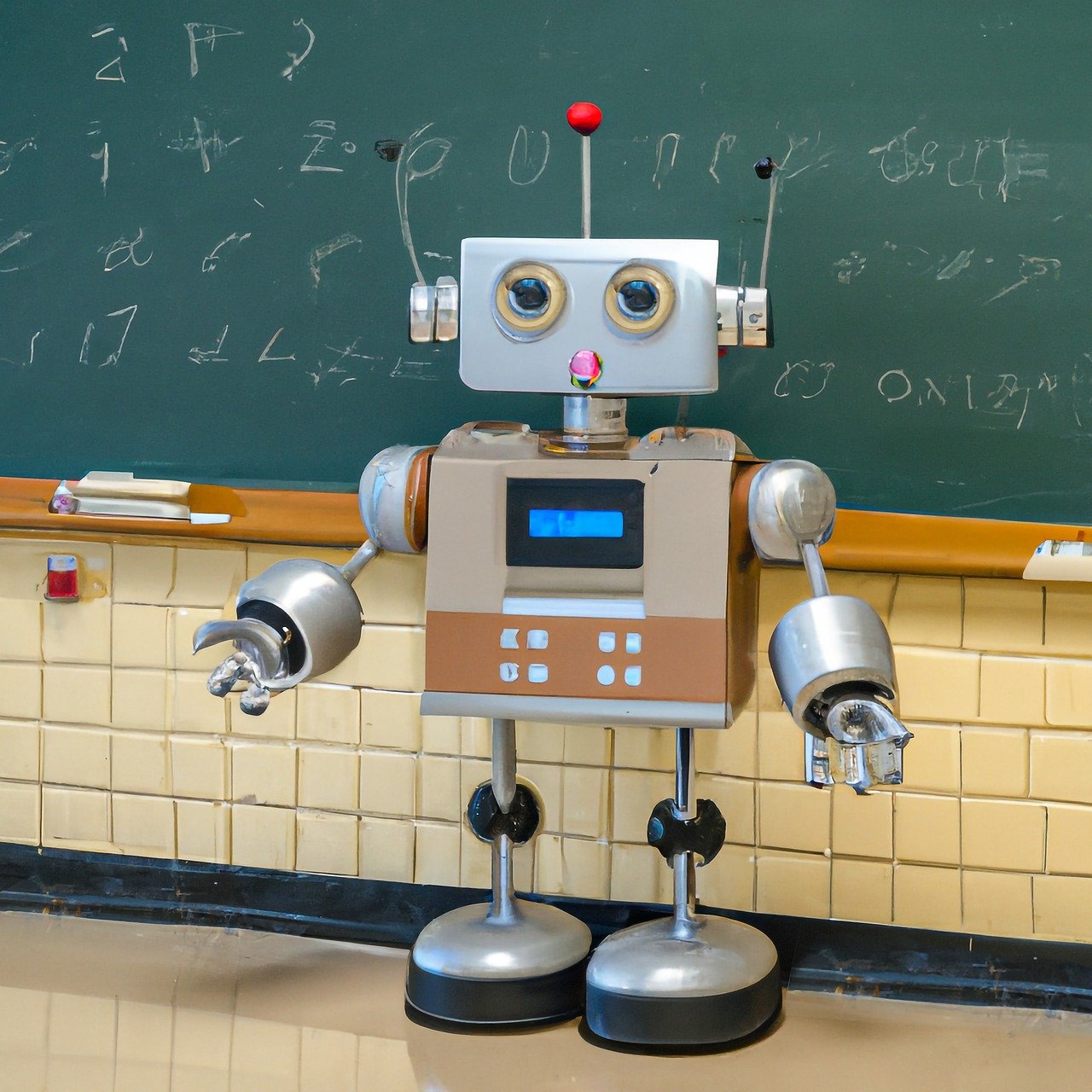
AI Technologies in Biometrics
Artificial intelligence technologies have revolutionized the field of biometrics, making it more efficient and reliable than ever before. By leveraging advanced algorithms and computational power, AI enhances biometric systems in various ways, including improved accuracy, speed, and adaptability. These enhancements are vital, especially in military settings where identity verification must be both rapid and infallible. Imagine a world where the moment a soldier steps onto a base, their identity is verified in seconds, allowing for seamless access to secure areas without the hassle of traditional checks. This is not just a dream; it is becoming a reality thanks to AI.
One of the key technologies driving this transformation is machine learning, which allows biometric systems to learn from vast amounts of data. By analyzing patterns and trends, machine learning algorithms can significantly reduce the chances of false positives and negatives, leading to more accurate identification. For instance, a fingerprint recognition system powered by machine learning can adapt to variations in fingerprint quality or environmental conditions, ensuring that personnel can be verified even under less-than-ideal circumstances.
Another significant technology is deep learning, a subset of machine learning that mimics the way the human brain processes information. Deep learning algorithms can analyze complex datasets, such as images, to identify unique features that distinguish one individual from another. This capability is particularly crucial for facial recognition systems, where slight variations in lighting, angle, or expression can impact performance. With deep learning, these systems become more robust, capable of accurately identifying individuals even in challenging environments.
To illustrate the impact of AI on biometric technologies, consider the following table that summarizes key AI technologies and their applications in biometrics:
| AI Technology | Application in Biometrics | Benefits |
|---|---|---|
| Machine Learning | Fingerprint Recognition | Increased accuracy and adaptability to environmental changes |
| Deep Learning | Facial Recognition | Improved identification under varying conditions |
| Neural Networks | Voice Recognition | Enhanced processing of complex audio signals |
| Computer Vision | Iris Recognition | High precision in identifying individuals |
Furthermore, AI technologies are not only enhancing traditional biometric methods but are also paving the way for innovative approaches. For instance, behavioral biometrics, which analyze patterns in human activity, are gaining traction. By using AI to monitor how individuals interact with devices, these systems can create unique profiles based on behavior, offering an additional layer of security. Imagine a scenario where a soldier's unique way of typing on a keyboard or the specific pattern of their movements is used to verify their identity—this is the future that AI is helping to create.
In conclusion, the integration of AI technologies into biometric systems is transforming military operations, making them more secure and efficient. As these technologies continue to evolve, we can expect even greater advancements that will redefine how identity verification is conducted in the field. The potential for AI in biometrics is enormous, and its impact is just beginning to be felt.
- What is biometric authentication? Biometric authentication is a security process that relies on unique biological traits, such as fingerprints, facial recognition, or iris patterns, to verify an individual's identity.
- How does AI enhance biometric systems? AI enhances biometric systems by improving accuracy, speed, and adaptability through technologies like machine learning and deep learning, enabling better identification in various environments.
- What are the challenges of using AI in biometrics? Challenges include ethical concerns, data privacy issues, and potential inaccuracies due to environmental factors, which necessitate ongoing research and development.
- What is the future of AI in military biometrics? The future looks promising, with advancements aimed at improving accuracy, reducing biases, and integrating AI with other security measures for a comprehensive defense strategy.
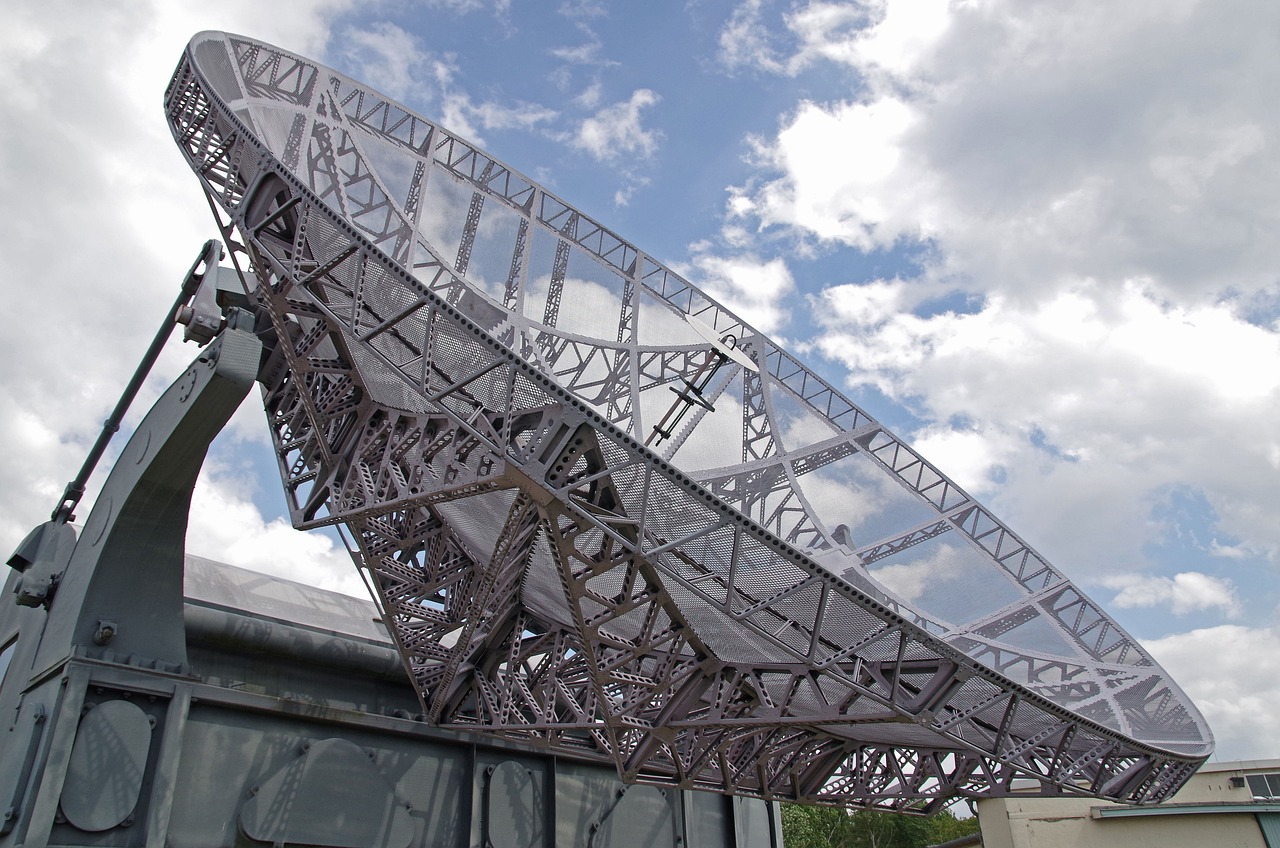
Facial Recognition Systems
Facial recognition technology has emerged as a groundbreaking tool in military operations, powered by the incredible capabilities of artificial intelligence. This sophisticated system enables real-time identification of personnel, ensuring that only authorized individuals gain access to sensitive areas and information. Imagine a world where security breaches are minimized, and operational efficiency is maximized, all thanks to a technology that can recognize faces in a split second. With the integration of AI, these systems are not just fast; they are also incredibly accurate, capable of analyzing numerous facial features and comparing them against vast databases in mere milliseconds.
One of the most significant advantages of AI-driven facial recognition systems is their ability to adapt to different environments. Whether it's a bustling military base or a covert operation in a remote location, these systems can function effectively under various conditions. They can handle changes in lighting, angles, and even facial expressions, making them versatile tools in the ever-evolving landscape of military security. This adaptability is crucial, as it allows military personnel to maintain a high level of security without compromising operational efficiency.
However, while the benefits are substantial, there are also challenges that come with the use of facial recognition technology. Privacy concerns are at the forefront of discussions surrounding its implementation. The potential for misuse of data and the ethical implications of constant surveillance raise important questions. Military organizations must navigate these concerns carefully, ensuring that the deployment of such systems is balanced with the need for privacy and civil liberties. Moreover, the technology is not infallible; issues like false positives can lead to significant operational disruptions and mistrust among personnel.
To address these challenges, ongoing research and development are essential. Innovations in algorithms and machine learning can help improve the accuracy of facial recognition systems, reducing the likelihood of errors. Furthermore, integrating these systems with robust data protection measures can safeguard sensitive information, ensuring that the benefits of technology do not come at the cost of privacy. As military operations continue to evolve, the role of facial recognition systems will undoubtedly expand, offering new solutions to enhance security and operational integrity.
In summary, facial recognition technology, enhanced by artificial intelligence, presents a dual-edged sword for military applications. While it offers unparalleled advantages in security and efficiency, it also poses challenges that require careful consideration and proactive management. The future of this technology in military contexts is bright, but it hinges on the ability to balance innovation with ethical responsibility.
- What is facial recognition technology?
Facial recognition technology is a biometric system that uses AI to identify individuals by analyzing their facial features.
- How does AI improve facial recognition systems?
AI enhances the accuracy, speed, and adaptability of facial recognition systems, making them more effective in various environments.
- What are the privacy concerns associated with facial recognition?
Concerns include potential misuse of data, constant surveillance, and the ethical implications of monitoring individuals without consent.
- How can military organizations address the challenges of facial recognition?
By investing in research, improving algorithms, and implementing strong data protection measures, military organizations can mitigate risks while reaping the benefits of the technology.

Challenges in Facial Recognition
Facial recognition technology, while groundbreaking, is not without its challenges. One of the most pressing issues is the occurrence of false positives, where the system incorrectly identifies someone as a match. This can lead to significant operational disruptions, especially in high-stakes military environments where the wrong identification could jeopardize missions or lead to unauthorized access. Imagine a scenario where a soldier is misidentified as an intruder; the consequences could be dire.
Another major concern is the ethical implications of using facial recognition technology. As military forces increasingly rely on this technology, questions arise about privacy and surveillance. How do we balance the need for security with the potential for infringing on individual rights? This dilemma is particularly pronounced in military operations, where the line between security and privacy can often blur. The military must navigate these ethical waters carefully, ensuring that they maintain public trust while employing advanced technologies.
Furthermore, environmental conditions can significantly impact the performance of facial recognition systems. Factors such as lighting, weather, and even facial obstructions (like masks or helmets) can hinder the system's ability to accurately identify individuals. For instance, a facial recognition system might work flawlessly in a well-lit, controlled environment but struggle in a dimly lit combat zone. This inconsistency raises questions about the reliability of such systems in diverse operational settings.
To address these challenges, ongoing research and development are essential. Experts are exploring ways to enhance the accuracy of facial recognition technologies through improved algorithms and machine learning techniques. Additionally, integrating ethical guidelines into the deployment of these systems can help mitigate privacy concerns. The military must also invest in training personnel to understand the limitations and proper use of facial recognition technology to ensure it is applied effectively and responsibly.
In summary, while facial recognition technology holds immense potential for enhancing military security, it is crucial to acknowledge and address the challenges it presents. By doing so, the military can harness the benefits of this technology while minimizing risks and ethical concerns.
- What are the primary challenges faced by facial recognition technology in the military?
The primary challenges include false positives, ethical implications regarding privacy, and performance issues due to varying environmental conditions.
- How can the military address the ethical concerns surrounding facial recognition?
By implementing strict ethical guidelines and ensuring transparency in how the technology is used, the military can help mitigate privacy concerns.
- What steps are being taken to improve the accuracy of facial recognition systems?
Ongoing research focuses on enhancing algorithms and employing machine learning techniques to improve identification accuracy.

Future of Facial Recognition
The future of facial recognition technology in military applications is not just bright; it's positively dazzling! As we stand on the brink of technological breakthroughs, the integration of artificial intelligence is set to redefine how military personnel are identified and authenticated. Imagine a world where soldiers can gain access to secure areas simply by being recognized, eliminating the need for cumbersome identification cards or passwords. This is not science fiction; it’s rapidly becoming a reality.
One of the most exciting prospects is the improvement in accuracy. Current systems sometimes struggle with false positives and negatives, particularly in challenging environments. However, advancements in AI algorithms are paving the way for systems that can learn and adapt to various conditions. For instance, a facial recognition system could become more adept at recognizing individuals in different lighting conditions or amidst crowds, significantly enhancing operational efficiency.
Moreover, the reduction of biases in facial recognition technology is a critical focus area. Historically, many systems have faced scrutiny for their inability to accurately identify individuals from diverse backgrounds. The future will see a concerted effort to develop AI models that are trained on more comprehensive datasets, thereby promoting fairness and inclusivity. This is essential not only for ethical reasons but also for operational effectiveness, as military personnel come from various backgrounds and ethnicities.
Another thrilling development is the potential for seamless integration with other security measures. Imagine a multi-faceted security approach that combines facial recognition with biometric data, RFID technology, and even behavioral analytics. This comprehensive system would create a robust security framework that can adapt to various threats. For example, if a facial recognition system detects an unauthorized individual, it could trigger additional security protocols like lockdowns or alerts, significantly enhancing response times.
However, it's crucial to acknowledge that with great power comes great responsibility. As we advance, the ethical implications of facial recognition technology must be carefully considered. Privacy concerns are paramount, and the military must establish clear policies regarding data usage and retention. The goal should be to enhance security while respecting the rights of individuals. Transparent practices will be essential in building trust between military operations and the public.
In conclusion, the future of facial recognition in military applications is poised for transformative change. With advancements in AI enhancing accuracy, reducing biases, and integrating with other security measures, the potential for improved operational effectiveness is immense. As we move forward, it is imperative to balance innovation with ethical considerations, ensuring that these powerful tools serve to protect and not infringe on individual rights.
- What is facial recognition technology?
Facial recognition technology is a biometric software application that can identify or verify a person by analyzing their facial features from a digital image or video frame. - How does AI improve facial recognition?
AI enhances facial recognition by improving the accuracy of identification, reducing biases, and enabling systems to adapt to various environmental conditions. - Are there privacy concerns with facial recognition in the military?
Yes, there are significant privacy concerns, and it is crucial for military operations to establish robust policies to protect sensitive data. - What are the future trends in facial recognition technology?
Future trends include improved accuracy, reduced biases, and integration with other security measures to create a multi-layered defense strategy.

Fingerprint Recognition
Fingerprint recognition has long been a cornerstone of biometric authentication, especially within military operations. This technology relies on the unique patterns found in an individual's fingerprints, which are as distinctive as a snowflake. With the advent of artificial intelligence, the effectiveness and reliability of fingerprint recognition systems have soared to new heights. AI enhances these systems by improving accuracy and speed, making them indispensable for secure access and personnel verification.
In a military context, the stakes are incredibly high. Imagine a scenario where a soldier needs to gain access to a secure facility quickly. With traditional methods, delays can occur due to human error or outdated technology. However, AI-driven fingerprint recognition can process and verify identities in a matter of seconds, ensuring that only authorized personnel gain access. This rapid response is crucial in high-pressure environments where every second counts.
Moreover, AI algorithms can learn and adapt over time, continuously improving their performance as they process more data. This adaptability is particularly vital in military settings, where conditions can change rapidly. For example, if a soldier's fingers are dirty or wet, traditional systems may struggle to read the fingerprint accurately. However, AI can adjust its algorithms to account for these variables, enhancing reliability even in challenging conditions.
Despite its advantages, fingerprint recognition is not without challenges. Factors such as skin conditions, age, or injury can affect the quality of fingerprint scans. To mitigate these issues, modern systems often employ multi-modal biometric approaches, combining fingerprint recognition with other biometric modalities like facial recognition or iris scanning. This way, even if one method encounters difficulties, others can step in, creating a robust authentication process.
As we look to the future, the integration of AI in fingerprint recognition systems holds immense potential. Advancements in machine learning algorithms will likely lead to even faster processing times and higher accuracy rates. Furthermore, the military's need for secure, efficient identification methods will drive innovation, pushing the boundaries of what biometric systems can achieve. With ongoing research and development, we can anticipate a future where fingerprint recognition is not only more reliable but also seamlessly integrated into broader security frameworks.
- How does fingerprint recognition work? Fingerprint recognition works by capturing the unique patterns of ridges and valleys on a person's fingertip and comparing them to stored templates to verify identity.
- What are the advantages of using AI in fingerprint recognition? AI enhances fingerprint recognition by improving accuracy, speeding up processing times, and adapting to various environmental conditions.
- Can fingerprint recognition be used in harsh environments? Yes, AI-driven fingerprint systems can adapt to challenging conditions, such as dirty or wet fingers, improving reliability in various situations.
- What are the security concerns related to fingerprint data? Security concerns include potential data breaches and unauthorized access to biometric databases, necessitating robust security measures to protect sensitive information.

Integration with Other Security Measures
In today's rapidly evolving security landscape, the integration of AI-driven biometric authentication with other security measures is not just beneficial; it's essential. Imagine a fortress where multiple layers of defense work in harmony to protect its inhabitants. This is precisely what modern military security aims to achieve by combining various technologies. By leveraging biometric systems alongside traditional security measures, such as Radio Frequency Identification (RFID) and behavioral analytics, military operations can create a more robust and resilient security framework.
Consider RFID technology, which allows for automatic identification and tracking of personnel and equipment. When integrated with biometric systems like fingerprint or facial recognition, it enhances the accuracy of identity verification. For instance, as a soldier approaches a secure area, the RFID system can quickly read their credentials, while the biometric authentication ensures that the person is indeed who they claim to be. This dual-layer verification significantly reduces the risk of unauthorized access, making military installations much safer.
Furthermore, integrating behavioral analytics adds another layer of complexity to security protocols. By analyzing patterns of behavior, military systems can detect anomalies that may indicate a security threat. For example, if a soldier is accessing restricted areas at unusual times or with unusual frequency, the system can flag these behaviors for further investigation. This predictive capability, powered by AI, not only enhances security but also streamlines operations by allowing personnel to focus on genuine threats rather than false alarms.
The combination of these technologies creates a multi-layered defense strategy, often referred to as a defense-in-depth approach. This strategy is akin to an onion; as you peel back each layer, you reveal more information and security measures, making it increasingly difficult for potential intruders to penetrate. Below is a table that outlines some of the key integrations and their benefits:
| Security Measure | Integration Benefit |
|---|---|
| Biometric Authentication | Ensures accurate identity verification |
| RFID Technology | Tracks personnel and equipment in real-time |
| Behavioral Analytics | Identifies anomalies in behavior for threat detection |
| AI Algorithms | Enhances decision-making and response times |
In summary, the integration of AI-driven biometric authentication with other security measures not only strengthens military security but also enhances operational efficiency. This holistic approach ensures that military personnel can perform their duties in a secure environment, free from the looming threats of unauthorized access and potential breaches. As technology continues to advance, the potential for even greater integration and innovation in military security systems is boundless.
- What are biometric authentication systems?
Biometric authentication systems use unique biological traits, such as fingerprints, facial recognition, or iris scans, to verify an individual's identity. - How does AI improve biometric systems?
AI enhances biometric systems by increasing their accuracy, speed, and adaptability, making them more effective in various environments and conditions. - What are some challenges faced by biometric systems?
Challenges include false positives, ethical concerns, and performance issues under varying environmental conditions. - Why is integration with other security measures important?
Integrating biometric systems with other security measures creates a multi-layered defense strategy, enhancing overall security and reducing the risk of unauthorized access.
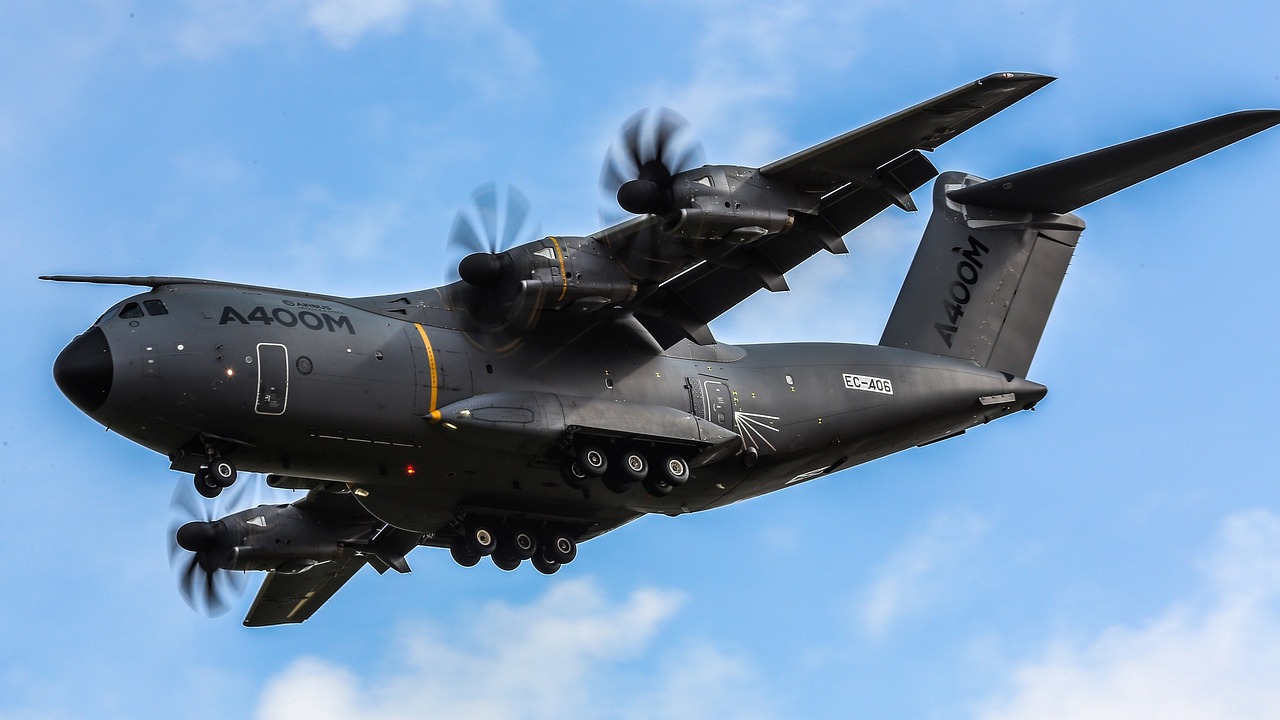
Data Privacy and Security Concerns
As we dive deeper into the realm of AI-driven biometric authentication in the military, one cannot overlook the looming shadow of data privacy and security concerns. With the integration of advanced technologies comes the responsibility to safeguard sensitive information. Imagine a world where each fingerprint, facial feature, and iris scan is meticulously documented and analyzed. While this level of detail can enhance security, it also raises critical questions about who has access to this data and how it is protected.
Data breaches are a growing concern in every sector, and the military is no exception. The potential for unauthorized access to biometric databases could lead to catastrophic outcomes, including identity theft and unauthorized surveillance. To mitigate these risks, robust security protocols must be established. This includes not only securing the data itself but also ensuring that the systems used to process and store this information are resilient against cyber threats.
Another significant aspect of data privacy revolves around the ethical implications of biometric data collection. For instance, military personnel often have their biometric data collected without fully understanding how it will be used or stored. This lack of transparency can lead to distrust and resistance among service members. To address these concerns, military organizations must implement clear policies that outline the purpose of biometric data collection, the duration of data retention, and the measures in place to protect this information.
Furthermore, the use of AI in analyzing biometric data introduces another layer of complexity. While AI can enhance the accuracy and speed of identification processes, it also raises questions about bias and fairness. If the algorithms powering these systems are not carefully designed and tested, they may inadvertently perpetuate existing biases, leading to unfair treatment of certain individuals. Continuous monitoring and evaluation of AI systems are essential to ensure they operate fairly and transparently.
In conclusion, while AI in military biometric systems offers profound benefits, it also necessitates a careful approach to data privacy and security. The military must prioritize creating a framework that not only enhances security but also respects the rights and privacy of individuals. This will involve a combination of technological solutions, ethical guidelines, and ongoing dialogue with all stakeholders involved.
- What are the main concerns regarding data privacy in military biometrics?
Key concerns include unauthorized access, data breaches, and the ethical implications of data collection. - How can the military ensure the security of biometric data?
Implementing robust security protocols, regular audits, and clear data management policies can help safeguard sensitive information. - What role does AI play in enhancing biometric systems?
AI improves the accuracy, speed, and adaptability of biometric systems, making them more effective in identifying individuals. - Are there risks of bias in AI-driven biometric systems?
Yes, if not carefully designed, AI algorithms can perpetuate existing biases, leading to unfair treatment. - What measures can be taken to address ethical concerns in biometric data collection?
Clear policies outlining the purpose, usage, and retention of biometric data can help address ethical concerns.
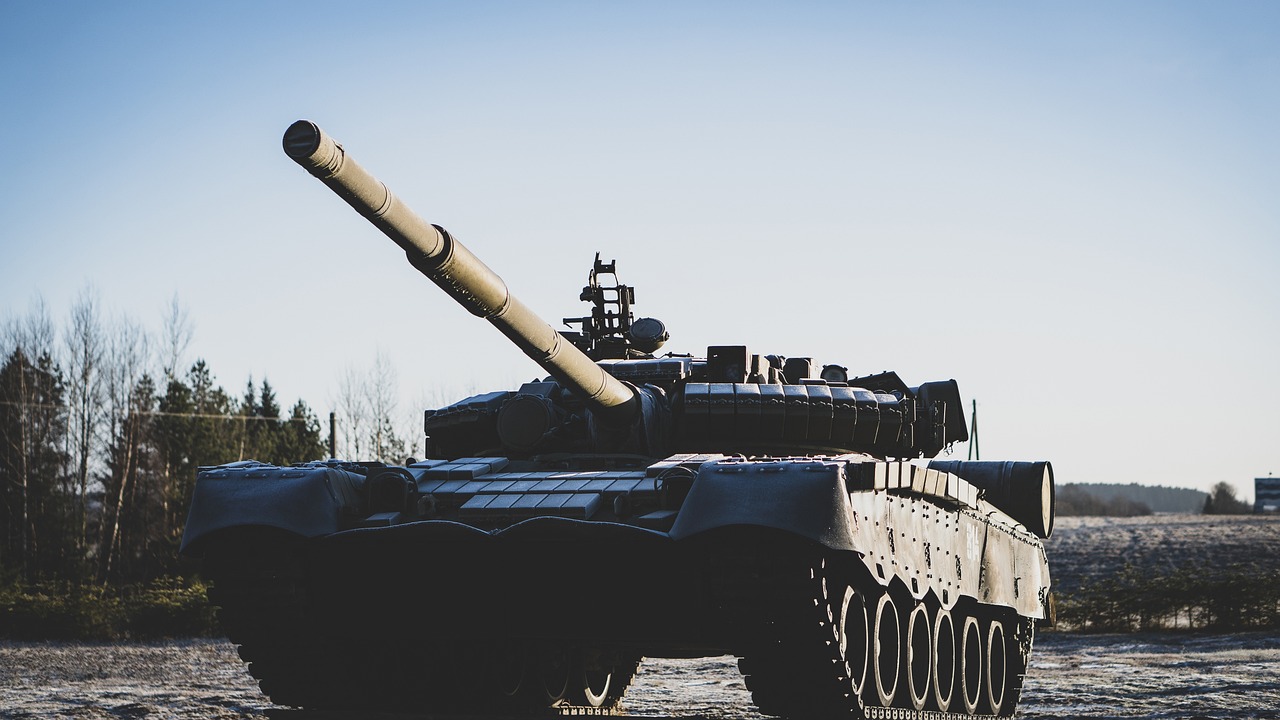
Future Trends in Military Biometrics
The landscape of military biometrics is rapidly evolving, driven by the integration of artificial intelligence (AI) and innovative technologies. As we look to the future, it's clear that these advancements will not only enhance security but also redefine how military personnel are identified and authenticated in various operational environments. One of the most exciting trends is the development of predictive analytics. By leveraging vast amounts of data, military systems can anticipate potential threats and identify individuals based on behavioral patterns, rather than just physical characteristics. This shift from reactive to proactive security measures could significantly enhance operational readiness.
Another promising trend is the emergence of adaptive authentication systems. These systems are designed to learn and evolve over time, adjusting their protocols based on user behavior and environmental conditions. For instance, if a soldier typically accesses a secure area at a certain time, the system can adapt to recognize this pattern and adjust its authentication requirements accordingly. This not only streamlines the access process but also adds an additional layer of security, as it becomes increasingly difficult for unauthorized individuals to replicate such complex behaviors.
Moreover, the integration of multimodal biometric systems is gaining traction. These systems utilize multiple biometric identifiers, such as fingerprints, facial recognition, and iris scans, to create a more robust authentication process. By combining various traits, the likelihood of false positives decreases significantly, ensuring that only authorized personnel gain access to sensitive areas. Imagine a scenario where a soldier's access is verified through a combination of their fingerprint and facial recognition, making it nearly impossible for someone to impersonate them.
In addition to these advancements, there is a growing emphasis on data security and privacy. As military biometrics become increasingly sophisticated, the need for stringent data protection measures is paramount. Future systems will likely incorporate advanced encryption techniques and secure data storage solutions to safeguard sensitive information. This focus on security is not just about protecting military personnel; it's also about maintaining public trust in the technologies being deployed.
Lastly, the collaboration between military and tech industries is expected to flourish. As defense organizations seek to harness the latest technological innovations, partnerships with tech companies will be crucial. This collaboration can lead to the development of cutting-edge solutions that are tailored specifically for military needs, ensuring that the systems are not only effective but also user-friendly for personnel in the field.
In summary, the future of military biometrics is bright and full of potential. With advancements in predictive analytics, adaptive systems, multimodal biometrics, enhanced data security, and industry collaboration, the military is poised to revolutionize how it approaches authentication and security. As these technologies mature, they will undoubtedly play a critical role in ensuring the safety and efficiency of military operations worldwide.
- What are the main benefits of using AI in military biometrics? AI enhances the accuracy, speed, and adaptability of biometric systems, making them more effective in identifying individuals in diverse environments.
- How do predictive analytics improve military security? Predictive analytics allow military systems to anticipate threats and behaviors, enabling proactive measures to enhance security.
- What is multimodal biometric authentication? Multimodal biometric authentication uses multiple biometric identifiers to create a more secure and reliable authentication process.
- How is data privacy maintained in military biometrics? Future systems will incorporate advanced encryption and secure data storage solutions to protect sensitive information from breaches.
- Why is collaboration with tech companies important for military biometrics? Collaborations can lead to the development of tailored solutions that meet specific military needs, ensuring effectiveness and user-friendliness.
Frequently Asked Questions
- What is biometric authentication in military applications?
Biometric authentication refers to the use of unique biological traits, such as fingerprints or facial features, to verify the identity of individuals. In military applications, it significantly enhances security by ensuring that only authorized personnel can access sensitive areas or information.
- How does AI improve biometric systems?
AI enhances biometric systems through technologies like machine learning and deep learning, which improve accuracy and speed. This means that biometric systems can quickly and reliably identify individuals, even in challenging environments, reducing the risk of unauthorized access.
- What are the main challenges associated with facial recognition?
Facial recognition faces several challenges, including false positives, which can mistakenly identify individuals, and ethical concerns related to privacy. Additionally, varying lighting and environmental conditions can affect the system's performance, highlighting the need for continuous improvement.
- What is the future of biometric authentication in the military?
The future looks bright for biometric authentication in military settings. Advancements are focused on improving accuracy, reducing biases, and developing adaptive systems that can integrate seamlessly with other security measures, enhancing overall effectiveness.
- How does fingerprint recognition fit into military security?
Fingerprint recognition is a cornerstone of military biometric systems. AI technologies enhance its reliability and speed, making it a crucial tool for secure access and personnel verification in military operations, ensuring that only authorized individuals can perform sensitive tasks.
- What are the data privacy concerns related to AI in biometrics?
Implementing AI in military biometrics raises significant data privacy concerns, as sensitive personal information could be at risk of breaches or misuse. It's essential to have robust policies and technologies in place to protect this data and maintain trust in the systems.
- What emerging trends are shaping military biometrics?
Emerging trends in military biometrics include the use of AI for predictive analysis and adaptive authentication systems. These innovations promise to revolutionize how military personnel are identified and authenticated in the field, making processes more efficient and secure.


















